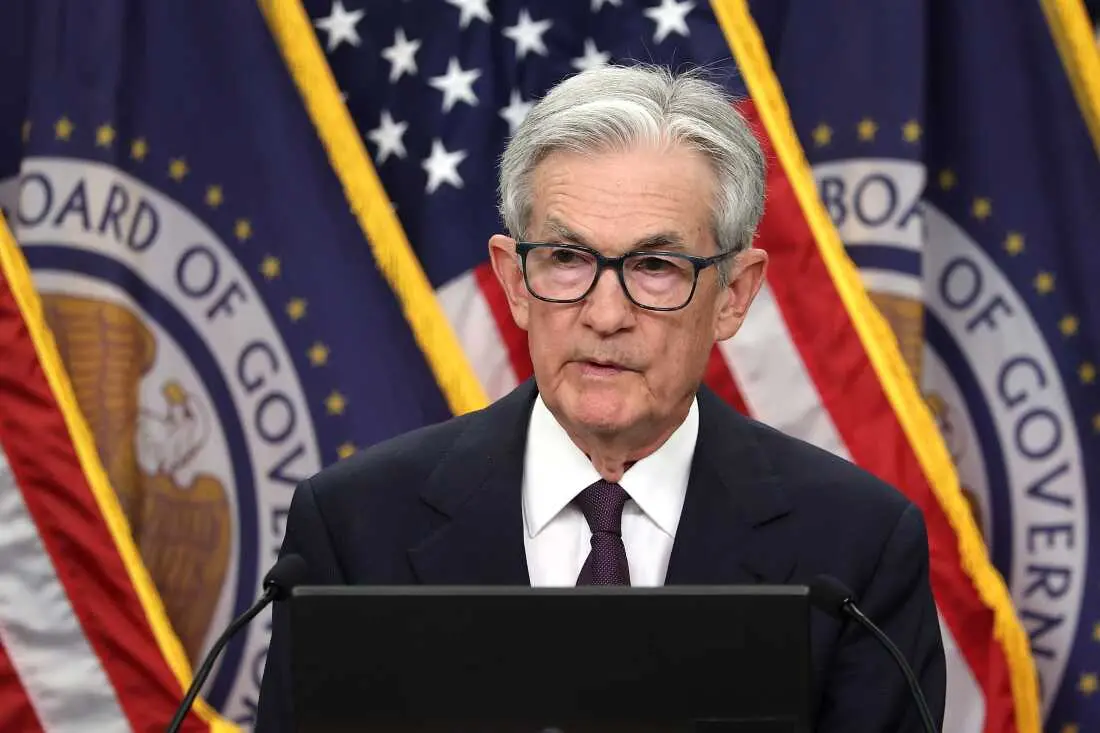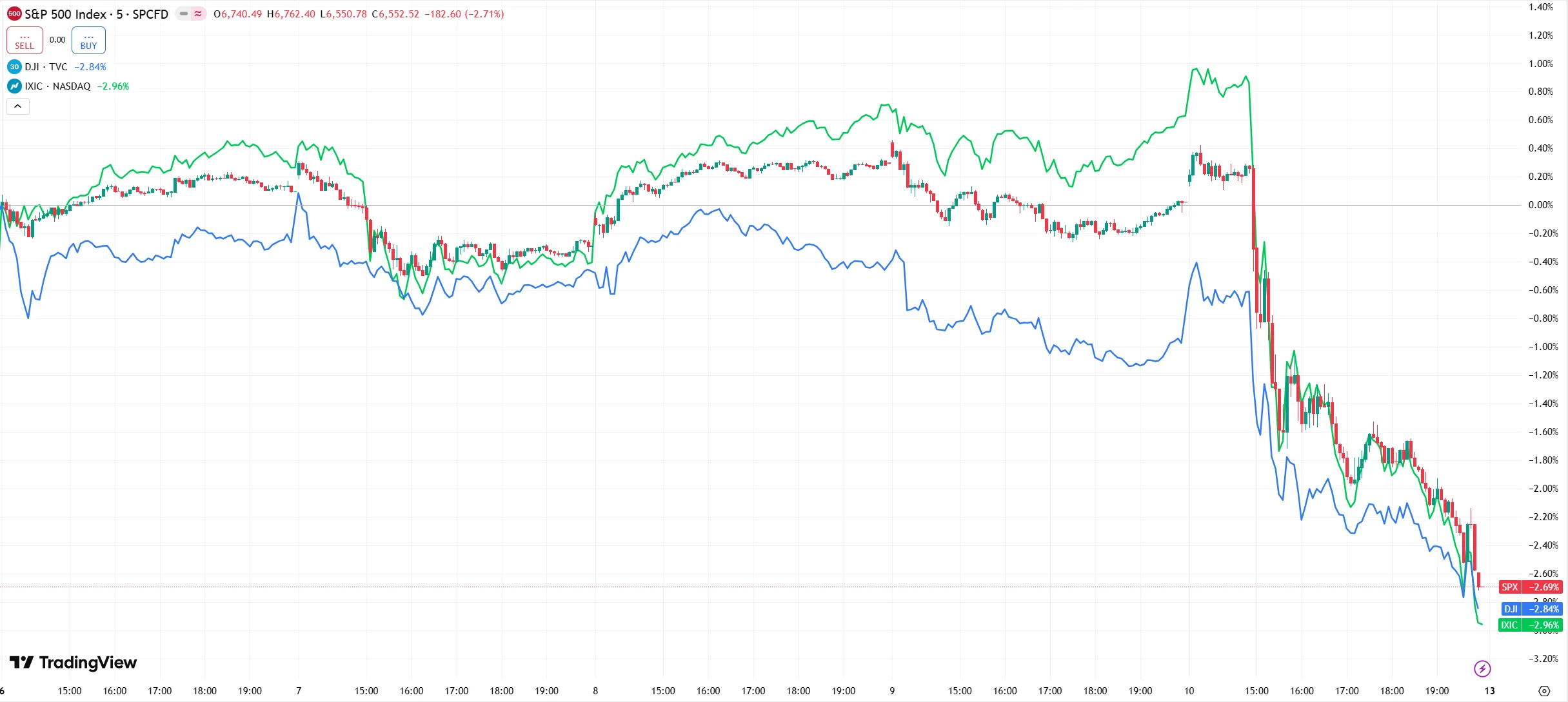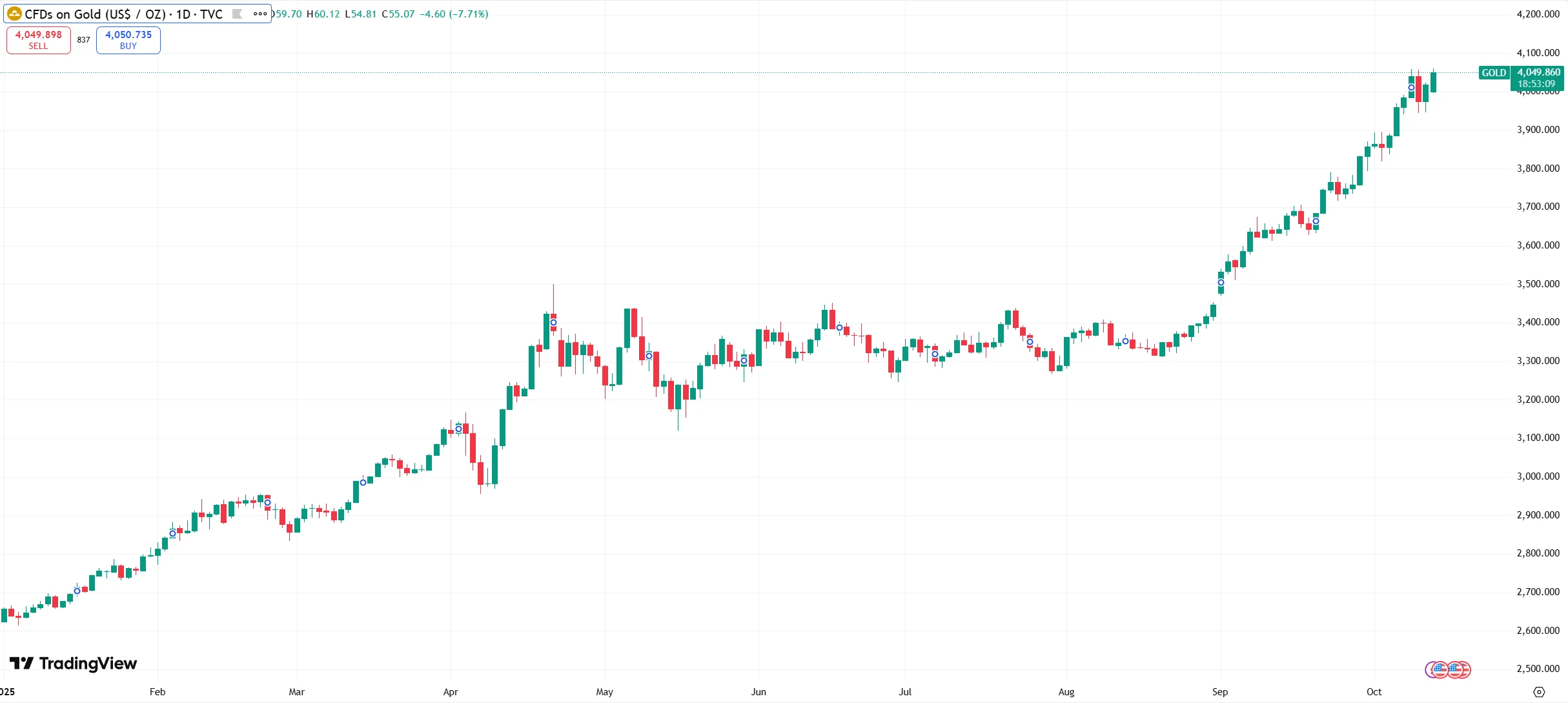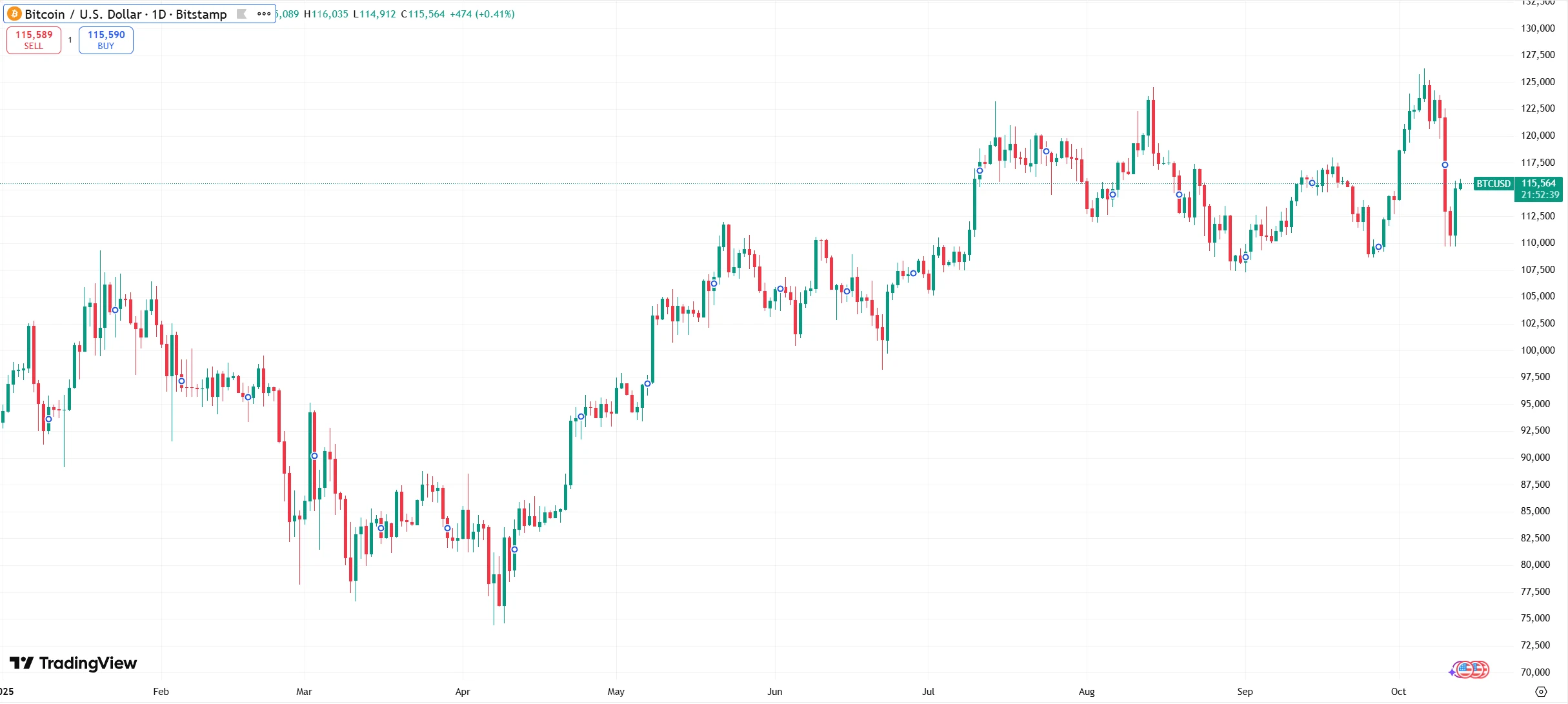This Week in Markets: U.S. Hits Chinese Imports with 100% Tariff Hikes, Powell Takes the Podium, and Q3 Earnings Season Kicks Off for Wall Street
22:22 October 12, 2025 EDT
FoolBull Brings You This Week’s Market Highlights:
Market Focus
U.S. Imposes 100% Tariffs on All Chinese Imports
On October 10, 2025, U.S. President Donald Trump announced via social media that the United States will impose a 100% tariff on all Chinese imports starting November 1, adding that there is “no longer any need” to meet with senior Chinese officials later this month.
The move came in response to a series of countermeasures recently announced by Beijing. On the first business day following China’s National Day holiday, the Ministry of Commerce issued six consecutive announcements, imposing export controls on rare earth materials, technical equipment, and lithium battery components. The measures were described as legally grounded, highly targeted, and unprecedented in scope, striking directly at the heart of U.S. defense and semiconductor industries.

On October 12, a spokesperson for China’s Ministry of Commerce responded to the U.S. decision to impose 100% tariffs. The spokesperson stated that China had taken note of the situation, emphasizing that the October 9 export control measures on rare earths and related items were a normal step to improve China’s export control system under domestic laws and regulations.
Regarding the tariff conflict, the spokesperson reiterated China’s consistent stance: “We do not want a trade war, but we are not afraid of one.” China urged the U.S. to correct its erroneous actions, uphold the important consensus reached by both leaders, and continue to make good use of existing trade consultation mechanisms.
The spokesperson called for resolving differences through dialogue based on mutual respect and equality to maintain the stable, healthy, and sustainable development of bilateral trade relations. However, if the U.S. “insists on going its own way,” China would “take all necessary measures to safeguard its legitimate rights and interests.”
The spokesperson further stressed that export control does not mean a ban on exports. Applications that meet the requirements will be approved. Before the announcement, China had informed relevant countries and regions through bilateral export control dialogue mechanisms and expressed willingness to strengthen communication on export control to better ensure the security and stability of global industrial and supply chains.
U.S. CPI Report Delayed to October 24
The U.S. September CPI report will be released at 8:30 a.m. ET on October 24, nine days later than originally scheduled.
The delay stems from the U.S. federal government shutdown, which forced the Bureau of Labor Statistics (BLS) under the Department of Labor to suspend operations due to a lack of funding. However, the BLS recalled part of its staff to finalize the CPI data to ensure that the Social Security Administration can accurately and timely adjust benefits as required by law.
The new release date falls just ahead of the Federal Open Market Committee (FOMC) meeting on October 28–29, making the CPI report a key input for policymakers in assessing inflation dynamics and determining the next move on interest rates.
Fed Officials to Speak Ahead of Policy Meeting
In the final week before the Fed’s blackout period for the October FOMC meeting (October 13–18), a flurry of speeches by Federal Reserve officials is scheduled. Vice Chair for Supervision Michelle Bowman and Fed Chair Jerome Powell will speak on October 13 and 14, respectively. Fed Governor Christopher Waller and Boston Fed President Susan Collins will deliver remarks on October 15.

Earlier, on October 9, several Fed officials had already shared their views. New York Fed President John Williams voiced support for further rate cuts in 2025 to cushion a potential labor market slowdown. Cleveland Fed President Loretta Mester warned that easing too quickly could reignite inflationary pressures. Fed Governor Michael Barr, speaking at the Economic Club of Minnesota, took a more cautious stance, emphasizing that while progress had been made, the Fed must remain vigilant toward persistent price pressures.
Collectively, the remarks underscored the delicate balancing act facing the Fed as it seeks to manage both inflation and employment goals, setting the tone for the upcoming October 28–29 policy meeting.
U.S. Stocks Enter Third-Quarter Earnings Season
The week of October 13–18, 2025, marks the start of the Q3 earnings season for U.S. equities. Major financial institutions — including JPMorgan Chase, Goldman Sachs, Citigroup, and Wells Fargo — will report results before the market opens on October 14, followed by Bank of America and Morgan Stanley on October 15. As a key player in the global AI supply chain, TSMC will release earnings before the market opens on October 16, while industry heavyweight Johnson & Johnson will also report during the week.
Market consensus expects robust results from the six largest U.S. banks, driven by a rebound in investment banking activity and resilient credit conditions that continue to support consumer and business lending. For TSMC, investors will closely watch profit margins and forward guidance, seeking confirmation that AI-driven growth momentum remains intact — insights that could shape sentiment toward the broader semiconductor sector.
With the government shutdown disrupting official economic data, this earnings season will play a critical role in revealing the real condition of the U.S. economy. Investor attention will focus on corporate commentary regarding demand trends and any signs of workforce reductions or cost-cutting measures.
NVIDIA Hosts 2025 OCP Global Summit
The NVIDIA Open Compute Project (OCP) Global Summit 2025 is being held October 13–16 at the San Jose Convention Center.
The annual event brings together industry leaders, researchers, and innovators to share insights, foster collaboration, and showcase the latest advancements in open hardware and software infrastructure.

Source: NVIDIA
NVIDIA’s participation includes both product showcases and technical sessions. For example, on October 15 (3:50–4:05 p.m. PST), Boyd Corporation will co-present with NVIDIA on “Rack Simulator Design for Multi-Generation IT Racks” in Hall 210cdgh as part of the OCP Data Center Facilities track. NVIDIA is also displaying its GB300 NVL72 and GB200 NVL72 systems, powered by Blackwell Ultra chips, which deliver breakthrough performance for AI inference workloads.
Oracle AI World 2025 Kicks Off Monday
Oracle AI World 2025 opened on Monday, October 13, in Las Vegas, Nevada.

Source: Oracle
Beginning this year, Oracle’s flagship global conference — previously known as Oracle Cloud World — has been rebranded as Oracle AI World, reflecting the company’s strategic shift toward artificial intelligence. The event runs through October 16 and features training sessions, keynote presentations, and thematic discussions covering AI integration across Oracle’s product ecosystem.
SpaceX Set for 11th Starship Test Flight
SpaceX plans to conduct the 11th test flight of its Starship vehicle at 7:15 p.m. ET on October 13, 2025.

Source: SpaceX
Dubbed the “graduation test” for Starship’s second-generation design, this mission aims to achieve the first fully successful flight and recovery cycle — a liftoff, orbit, and safe return without explosion or disintegration.
According to the official mission brief, the test will evaluate several critical flight systems. During reentry, Starship will face extreme thermal stress, with select heat shield tiles intentionally weakened to gather material performance data. The booster will attempt a controlled splashdown in the Gulf of Mexico instead of being caught by the launch tower, testing engine cutoff and reignition reliability.
The spacecraft will also restart its engines multiple times and release several “Starlink simulator” payloads to validate the deployment mechanism.
Meanwhile, the Super Heavy booster will demonstrate a new landing engine configuration — using five engines for descent control — designed for the next-generation model to improve redundancy and precision in future landings.
Market Review
Last Friday, U.S. stocks suffered a sudden and steep sell-off. After opening higher, all three major indexes plunged sharply mid-session and extended their losses throughout the afternoon, ultimately posting their biggest single-day declines since April. At the close, the Dow Jones Industrial Average dropped 878.82 points, or 1.90%, to 45,479.60. The S&P 500 fell 182.60 points, or 2.71%, to 6,552.51. The Nasdaq Composite tumbled the most, plunging 820.20 points, or 3.56%, to close at 22,204.43.

Source: TradingView
The “Magnificent Seven” tech stocks fell 2.69% for the week. Among them, Tesla dropped 3.8%, Amazon fell more than 1.4%, NVIDIA declined about 2.4%, Meta lost over 0.7%, Apple slid nearly 5%, Microsoft slipped roughly 1.2%, and Alphabet fell more than 3.6%.
The sell-off cast a shadow over the months-long rally that had persisted since spring and evoked memories among Wall Street traders of the market turbulence seen in early April.
Most analysts attributed the sharp decline to escalating concerns over the Trump administration’s recent wave of tariff policies, particularly rising fears of renewed U.S.-China trade tensions and the growing dispute surrounding the EU’s “carbon tariffs.” In addition, the ongoing U.S. government shutdown, legal challenges to Trump’s trade measures, and structural fragilities within the market all intensified the downward momentum.
As fear spread, investors pulled money out of equities and sought refuge in safe-haven assets such as gold. Last week, gold prices surged more than 3%, holding firmly above the $4,000 per ounce level.

Source: TradingView
Amid macro policy shocks, excessive market leverage, malfunctioning market-making mechanisms, and diverging policy expectations, Bitcoin also experienced a flash crash early on October 11. The cryptocurrency plunged from a high of $122,000 to an intraday low of $101,500, a 24-hour drop of over 17% — its largest single-day loss of the year.
According to data from Coinglass, total liquidations across the market reached $19.141 billion in the past 24 hours, with 1,621,284 traders liquidated worldwide.

Source: TradingView
Disclaimer: The content of this article does not constitute a recommendation or investment advice for any financial products.

Email Subscription
Subscribe to our email service to receive the latest updates
